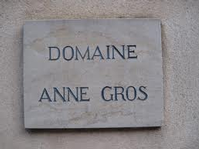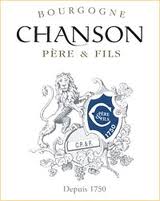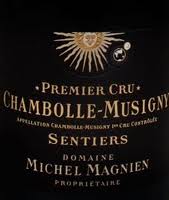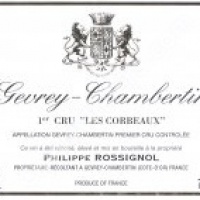BEAUNE, France — Once upon a time, a hefty selection of Burgundy was a staple
of virtually every fine wine shop in America. Burgundy was the benchmark for any
wine made from pinot noir or chardonnay, so much so that winemakers from the New
World hardly ever missed an opportunity to characterize their style of
chardonnay or pinot as "Burgundian."
Of course, few of them were, for
Burgundy's aromas and flavors, the structure and textures of its wines, are
driven as much by the unique soils and climate of the region as they are by the
hand of the winemaker.
 Red Burgundies
are generally firmer when young and significantly more tannic than New World
pinots, while white Burgundies tend to be less fleshy and exhibit less fruit and
more minerality than the chardonnays of the New World.
Red Burgundies
are generally firmer when young and significantly more tannic than New World
pinots, while white Burgundies tend to be less fleshy and exhibit less fruit and
more minerality than the chardonnays of the New World.
At some point,
perhaps a decade or two ago, the "Burgundian" style, or profile, became less
attractive to wine consumers drawn to the ripe, fleshy, creamy pinots and
chardonnays that came into fashion in California and Oregon in the
1990s.
As the pendulum swings back the other way and more and more
enthusiasts seem to be searching for wines that exhibit structure, finesse and
minerality, particularly pinots of that ilk, now seems like an appropriate time
to take a peek at some of the producers in Burgundy who are making the wines
that customers want, and at a very high level.
My observations are drawn
from tastings last week during Les Grands Jours de Bourgogne, a week-long spin
through the vineyards and cellars of Burgundy for members of the professional
wine trade and wine media.
The Grands Jours is conducted every two
years. The wines presented this year were primarily from the 2009 and 2010
vintages, both of which were very good, although very different. The growing
season of 2009 was warmer and produced softer, rounder wines that will be ready
to drink earlier. The 2010 vintage was cooler and produced more classically
structured wines that will age beautifully.
In one of a random series of
columns on Burgundy that I will offer over the next couple of months, today's
Wine Talk focuses on the red wines of the Cote de Nuits. I have further
sharpened the focus by concentrating on producers I either didn't know or hadn't
tasted often, or in some time. My tastings in the Cote de Nuits were all about
discovery.
The following were the producers who caught my
eye:
Domaine Bart, Marsanny-La-Cote — The wines of
Domaine Bart are neither grand nor expensive (you can find most everything this
domaine produces for less than $40 a bottle), but they are some of the most
satisfying from this less heralded part of Burgundy. The 2010 Marsanny rouge Les
Finottes and 2010 Marsanny rouge Clos du Roy both scored will in my evaluation
at 90-plus points each. Both wines are richly layered and exhibit the firm
structure of the vintage.
 Chanson Pere et
Fils, Beaune — Vastly improved in recent vintages, the Chanson wines
all exhibited firm structure along with extraordinary depth and complexity.
These are sophisticated red Burgundies that cry out for additional age in the
cellar. Chanson presented one of the better Marsannays I tasted, a 90-point wine
from the 2009 vintage, but the two show-stoppers were the 2009 Chambertin Clos
de Beze at 97 points and the 2009 Charmes-Chambertin at 95 points. Both wines
are layered, powerful and spicy. If you haven't had a Chanson lately, you might
be surprised.
Chanson Pere et
Fils, Beaune — Vastly improved in recent vintages, the Chanson wines
all exhibited firm structure along with extraordinary depth and complexity.
These are sophisticated red Burgundies that cry out for additional age in the
cellar. Chanson presented one of the better Marsannays I tasted, a 90-point wine
from the 2009 vintage, but the two show-stoppers were the 2009 Chambertin Clos
de Beze at 97 points and the 2009 Charmes-Chambertin at 95 points. Both wines
are layered, powerful and spicy. If you haven't had a Chanson lately, you might
be surprised.
Domaine Ghislaine Barthod,
Chambolle-Musigny — Those who write off Bourgogne as the generic
quaffing wine of Burgundy would be well advised to sample a bottle of the 2010
Bourgogne rouge from G. Barthod. This is a rich, firmly structured red from one
of the top producers in Chambolle-Musigny. The village Chambolle from 2010 is
another eye-catching wine, showing aromas of violets and black and red raspberry
fruit. Then there is the stunning Chambolle-Musigny 1er Cru Les Cras (94
points), a firmly structured, layered, masculine wine that exhibits the classic
depth and elegance of the best reds from the Cote de Nuits.
 Domaine Michel Magnien, Morey-Saint-Denis — These are the
domain wines that are made by the son, Frederic, who also produces exquisite
wines under the negociant label Frederic Magnien. Michel, a longtime grower in
the Cote de Nuits, inherited a number of plots in premier cru and grand cru
vineyards in the 1990s, and turned to producing wines from his own domain.
Frederic is celebrated as one of the brilliant young winemakers of the new
generation of vignerons in Burgundy. Wines that impressed were the 2010
Chambolle-Musigny Les Fremieres (92 points), 2010 Chambolle-Musigny 1er Cru Les
Sentiers (94) and the 2010 Morey-Saint-Denis 1er Cru Chaffots
(94).
Domaine Michel Magnien, Morey-Saint-Denis — These are the
domain wines that are made by the son, Frederic, who also produces exquisite
wines under the negociant label Frederic Magnien. Michel, a longtime grower in
the Cote de Nuits, inherited a number of plots in premier cru and grand cru
vineyards in the 1990s, and turned to producing wines from his own domain.
Frederic is celebrated as one of the brilliant young winemakers of the new
generation of vignerons in Burgundy. Wines that impressed were the 2010
Chambolle-Musigny Les Fremieres (92 points), 2010 Chambolle-Musigny 1er Cru Les
Sentiers (94) and the 2010 Morey-Saint-Denis 1er Cru Chaffots
(94).
Domaine Anne Gros, Vosne-Romanee — The brilliance
of the wines of Anne Gros is well known among connoisseurs of Burgundy, but I
don't have the opportunity to taste them with any frequency. The village wine
exhibited, the 2010 Vosne-Romanee (91), was one of the finest village wines I've
ever tasted from the Cote de Nuits. But that said, the three grand cru wines
presented — Clos de Vougeot, Echezaux and Richebourg, all from the 2010 vintage
— are as good as red Burgundy gets and blew away the village wine with ratings
between 94 and 96 points.
Domaine Michel Gros,
Vosne-Romanee — This is a producer with which I had no prior
experience, so I was pleasantly surprised by the exceptional quality across the
board. The 2010 Vosne-Romanee was yet another exceptional village wine at 90
points, and I rated the Vosne-Romanee 1er Cru Clos des Reas and the
Vosne-Romanee 1er Cru AuxBrulees each 95 points. These are sophisticated,
cellar-worthy Burgundies that are well worth the time and effort to seek
out.
 Domaine
Philippe Rossignol, Gevrey-Chambertin — No longer imported into the
U.S., Rossignol was one of the finest producers I encountered over the week of
Grands Jours tastings. Although well known to devotees of importer Kermit Lynch,
Rossignol and Lynch recently ended the partnership. I doubt very much that these
wines will be absent from the U.S. market for long. The 2009 Gevrey-Chambertin
1er Cru Les Corbeaux (94 points) was a showstopper, with a gorgeous nose,
exquisite balance and silky tannins, while the 2009 Gevrey-Chambertin 1er Cru
Estournelles St.-Jacques exhibited more minerality and firmer structure, with an
attractive spicy nuance.
Domaine
Philippe Rossignol, Gevrey-Chambertin — No longer imported into the
U.S., Rossignol was one of the finest producers I encountered over the week of
Grands Jours tastings. Although well known to devotees of importer Kermit Lynch,
Rossignol and Lynch recently ended the partnership. I doubt very much that these
wines will be absent from the U.S. market for long. The 2009 Gevrey-Chambertin
1er Cru Les Corbeaux (94 points) was a showstopper, with a gorgeous nose,
exquisite balance and silky tannins, while the 2009 Gevrey-Chambertin 1er Cru
Estournelles St.-Jacques exhibited more minerality and firmer structure, with an
attractive spicy nuance.
Domaine Tortochot,
Gevrey-Chambertin — The domain of Chantal and Michel Tortochot offers a
house style that runs through all of the wines save the grand cru
Mazis-Chambertin. The wines are feminine, delicate and sophisticated, the
personification of Burgundian elegance. The standouts were the aforementioned
2010 Mazis-Chambertin (95 points), 2010 Charmes-Chambertin Grand Cru (93) and
2010 Gerey-Chambertin 1er Cru Champeaux.